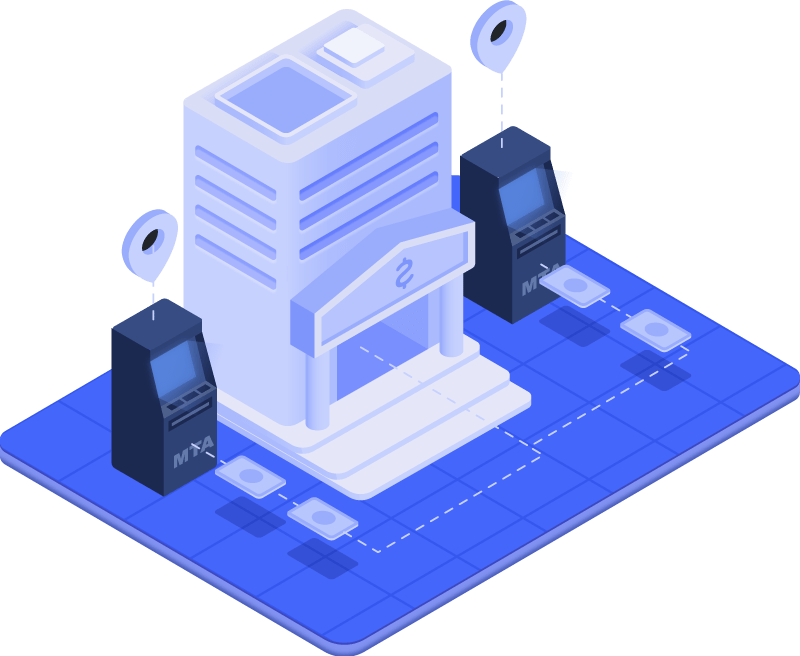你真的需要企业级网络管理吗?
白皮书
本文首先概述了网络管理产品的基本类别, followed by a discussion of the key features of a great enterprise management system 和 the signs that a business may be ready for an enterprise-class solution.
网络管理的目标
 网络管理的最终目标是降低风险, 消除停机和减速, 减少可变性, 积极支持企业拓展. The amount of business conducted that doesn’t rely on available 和 performing networks is small 和 shrinking. A good network management system is an indispensable asset that protects the company from slowdowns 和 catastrophic outages that would have major business impact. 但是您需要什么样的网络管理产品呢? 您的网络是否已经到了需要企业级功能的地步? 如果是这样,什么是伟大的 企业网管软件 看起来像?
网络管理的最终目标是降低风险, 消除停机和减速, 减少可变性, 积极支持企业拓展. The amount of business conducted that doesn’t rely on available 和 performing networks is small 和 shrinking. A good network management system is an indispensable asset that protects the company from slowdowns 和 catastrophic outages that would have major business impact. 但是您需要什么样的网络管理产品呢? 您的网络是否已经到了需要企业级功能的地步? 如果是这样,什么是伟大的 企业网管软件 看起来像?
网络管理前景
网络管理产品通常分为三个基本类别.
 免费工具
免费工具
有一些免费的工具,其中一些是上述SMB产品的基本版本. These usually require manually loading devices into the system 和 offer a basic level of pinging or SNMP polling. 它们几乎没有提供基本的性能数据,可能只提供基本的事件, 例如设备的up/down状态. 这些工具最适合大约20到30个设备的小型网络.

中间SMB
下一级是低端到中级SMB解决方案. 比如框架解决方案, 它们涉及多个产品和/或至少需要一些集成的“附加组件”. They usually come with a low initial price tag 和 cover a range of functional areas such as discovery, 库存, 和事件, 和, 中间解中, 某种程度的自动发现, 表演, 流, 以及技术报告或绘图功能. 这些产品收集的数据不像企业级解决方案那样深入, 虽然有些可以通过编程来扩展. 这些可能是小型网络的有效产品, 但随着网络规模的扩大,瓶颈可能会出现, 特别是在那些设计有一个中央数据库.
 企业级解决方案
企业级解决方案
企业级解决方案使您能够管理最新的技术和设备. These products provide sophisticated features for all of the requisite network monitoring functions, 包括详细的发现和自动发现, 库存, 事件根本原因分析(具有下游事件抑制和规则等特性), 深层元素和流量监测, 表演, 拓扑结构, 配置, 以及以技术和业务为重点的报告和仪表板.
此类别包括“遗留”框架解决方案, 哪些产品包含必须单独集成和维护的多点产品. It also includes “all-in-one” solutions where all (or most) functionality is embedded in a single software stream, 集成有限或没有集成,根据产品的体系结构进行更简单的扩展. 框架和一体化企业解决方案都提供了无限的可伸缩性, although all-in-one solutions tend to be less labor intensive due to their more unified designs.
网络管理产品评估
许多IT主管在评估网络管理产品时没有制定战略, 经常考虑广泛的免费工具组合, 中低端中小企业产品, 同时提供企业级解决方案. 这就像去买车时看到一辆尤戈、一辆保时捷和一辆谢尔曼坦克. It begs the question: what are you going to do with this vehicle: pick up your children from school (safe car), 带岳母去理发店(便宜的车), 入侵一个小国(大规模武器), 或者参加Indy 500(快车)?
让我们更仔细地看看企业级. 这是什么意思,对你来说是这样吗? 并不是每个人都需要企业级网络管理. 如果你的网络只有十几台设备,它们都存放在同一个壁橱里, 您可能不需要企业解决方案. 免费或SMB工具就足够了. 他们会在一个简单的列表中告诉你设备的状态是上升还是下降, 如果你需要重启设备, 你只需走到壁橱前,把它关掉再打开.
The first sign that you need an enterprise class network management solution is when it is really important that the network be continually up, 但是你再也不能在白板上描绘你的网络了. 当一个网络有几百台或更多的设备时, 你再也不能完全理解它了. 因此,您无法再在头脑中排除故障. 这时,您就需要一个能够“抓取”网络并为您执行此操作的管理解决方案.
There are fundamental capabilities you should expect from an enterprise class network management solution as outlined in the next sections.
企业级网络管理解决方案
发现设备库存和拓扑
You cannot be expected to manually load the network device 库存 into a network management system. 它必须自动发现你拥有什么,并不断地这样做. 网络改变. 经常. 此外, 它还必须发现网络的拓扑结构, 不需要您手动输入您认为的网络连接方式. 这听起来很基本,但令人惊讶的是,许多SMB解决方案无法做到这一点.
根本原因分析
Lower end products are “red light / green light” products: they tell you what is up 和 what is down, 在列表中. 当网络中只有十几台设备时,列表是有用的, 但是当有成百上千的设备时, 清单是无用的. 你需要一个解决方案,它不仅告诉你哪里出了问题, 同时也告诉你问题在哪里. 数十个网络设备可能无法访问, 但可能只有一个才是问题的真正原因. 这就是拓扑结构如此重要的原因.
表演
一个表现不佳的网络实际上比一个宕机的网络更糟糕. 如果你的网络坏了,你就去做其他事情来提高效率. 如果网络很慢, 你坐在电脑前等待事情发生, 浪费时间,变得沮丧. A good enterprise-class network management system monitors the 表演 of the network at the device level 和 with an eye toward application 流 as well.
配置
Though it’s widely accepted as truth that 90% of the problems on a network occur as a result of someone changing something, it’s remarkable how few network management solutions integrate device 配置 change management into their solutions. 它要么是事后“补上”的,要么是完全缺失的. 网络变更管理不再是一个单独的解决方案. 这是日常工作的一部分.
报告
管理解决方案的好坏取决于您从中获得的信息. Every IT department must justify themselves to the senior management of the company (和 to their 客户). That means they must prove to their constituents that they’re providing the service to which they committed. 不同的“客户”希望看到技术复杂程度不同的数据, 和 a good network management system allows them to easily create 和 view appropriate dashboards 和 create reports at the CIO level, 在技术用户层面也是如此.
十大赌博正规老平台水平监察
您可以只考虑管理组件:它们如何相互关联, 它们是如何联系起来的, 他们的健康, 等等......, but grouping those components 和 monitoring them as a service to meet SLAs 和/ or ensure that end user needs are being met is what ultimately matters.
Monitoring at the service level is especially important for large networks where you can no longer keep track of every component in your head. 在较大的网络中, appreciating the business relevance of each component means you must be able to monitor them as sub-components working together to deliver a service.
积极的管理
企业级网管系统能够在您出现问题之前发出警告. 较低端的工具告诉您在事实发生后出现了错误. 对于关键任务网络来说,这是不可接受的. An enterprise-class management solution will tell you things like the secondary power supply on your core router has failed 和 you are running on your primary, 或者开关上的温度升高,风扇失灵——以这个速度, 明天天气会过热. 问题在成为问题之前就被识别出来.
智能事件管理
随着数据的增长,随之而来的问题也在增加. 企业级业务产生的数据将远远超过任何网络工程师所能处理的, 威胁要用警戒的风暴淹没它们. 而是为了最准确地了解网络的运作, 你需要所有这些数据, 以及对事件的全面分类,远远超出了简单的“上升/下降”状态. Enterprise network management software will make sense of this vast sea of data 和 reduce the noise to a manageable volume displaying what needs to be seen, 无需工程师筛选最重要的问题.
友好型
增长的不仅仅是网络规模和分布, 还有保持网络运行的技术和协议的复杂性. 随着数据和十大赌博正规老平台需求的增加, 需要更多的技术来监视网络的运行情况. 然而, 因为规模和资源问题, network management tools aimed at small businesses will be unable to cover the same degree of complexity that an enterprise solution can. High-end enterprise network management solutions can offer a host of crucial monitoring technologies for 流, NBAR, SDN和云, 举几个例子. These will only become more prevalent 和 therefore vital to ensuring excellent network 表演.
机器学习
虽然还未成熟, machine learning represents the next generation of technologies that will help the network engineer keep their network running. 这是当前趋势的一部分, 体现在诸如AIOps之类的方法中, 它利用技术来协助和增强人类的工作能力. 大数据早已超出了任何人类分析的能力, 和 so 企业网管软件 now provides machine-based analytics to enhance both the accuracy 和 productivity of the people in the network operations center. Machine learning can help move a network team away from descriptive 和 predictive analytics towards a model of prescriptive analytics, 在面对多种未来结果时,工具可以在哪些方面帮助规定行动.
“Monitoring at the service level is especially important for large networks where you can no longer keep track of every component in your head. 在较大的网络中, appreciating the business relevance of each component means you must be able to monitor them as sub-components working together to deliver a service.”
自动化和设备支持
这在很大程度上取决于自动化. 低端工具需要您手动控制单个设备设置, 启动报告, 并将信息装入其中. 当您拥有一个由10,000台设备组成的网络时,这不是一个选择. 您需要一个能够自动跟踪您的网络库存的网络管理系统, 定期运行计划的(和先前定义的)报告, 监视性能阈值并发出警报, 确定问题的根本原因.
还有一个需要考虑的问题:设备支持. Lower end products don’t really dig into the network 库存 since they don’t track 表演 or specific status of devices under management. 它们只是报告设备正在响应或没有响应. 而高阶管理产品则需要更深入的设备理解. 当网络供应商推出新设备时, 企业级管理器需要为新设备添加详细的支持.
 不幸的是, the hardware vendors don’t necessarily ask the software management vendors what their release schedules are 和 then sync to them. It’s important to ask a network management vendor how long it takes to add support for a newly released device.
不幸的是, the hardware vendors don’t necessarily ask the software management vendors what their release schedules are 和 then sync to them. It’s important to ask a network management vendor how long it takes to add support for a newly released device.
最后是操作问题. 所有这些功能都需要可用,而不仅仅是可用. 产品需要易于安装,快速学习,并集成在一个有凝聚力的整体中.


